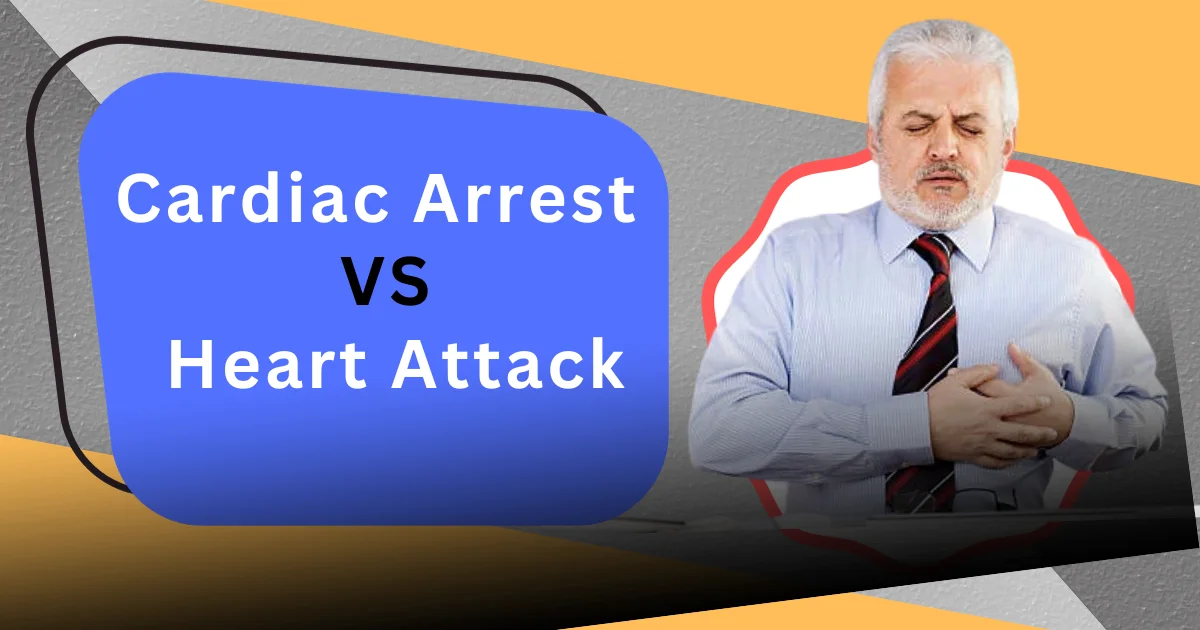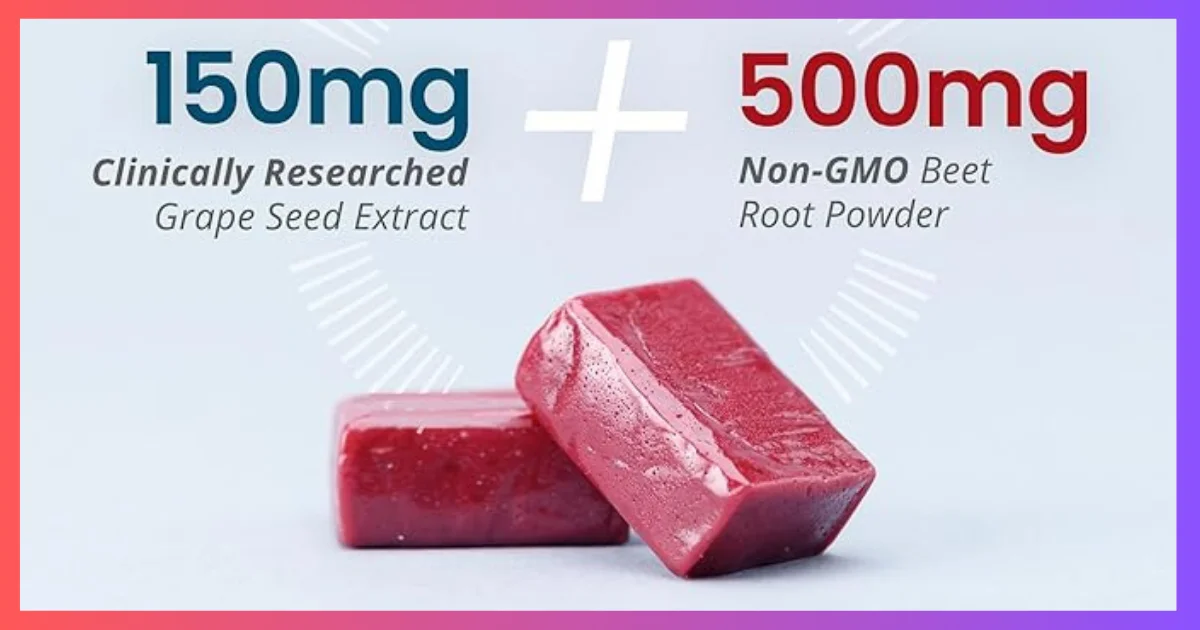Introduction: Recognizing the Term Differences for Life-Threatening Heart Events first off Cardiac arrest vs heart attack are two phrases that are frequently used interchangeably in the context of heart-related medical problems. Even though they are both dangerous illnesses, their causes, symptoms, and outcomes are very different from one another.

Table of Contents: Cardiac Arrest vs heart attack
1. Describe the Heart Attack
Heart Attack vs. Cardiac ArrestUsually, a blood clot that forms in a coronary artery is the reason. A heart attack, also known as a myocardial infarction, happens when there is an obstruction to the blood flow to a particular area of the heart muscle It happens.
2. Heart Attack Causes
Typically, a heart attack is brought on by: Heart Attack vs. Cardiac Arrest:
1. Coronary Artery Disease: A disorder characterized by narrowing or blockage of the arteries supplying blood to the heart.
2. Atherosclerosis: plaque accumulation in the arteries that lowers blood flow.
3. Emotional Stress: For certain people, acute stress might result in a heart attack.
3. Symptoms of a Heart Attack
1. Chest pain: the most common symptom, often described as a squeezing or pressure sensation in the chest.
2. Shortness of Breath: Difficulty in breathing, usually accompanied by chest discomfort.
3. Pain in Other Areas: Pain may radiate to the arms, neck, jaw, or back.
4. Treatment for a Heart Attack
The immediate treatment includes: cardiac arrest vs heart attack:
1. Aspirin: To help reduce blood clot formation.
2. Nitroglycerin: To relieve chest pain.
3. Thrombolytics: medications that dissolve blood clots.
5. What is cardiac arrest?
In contrast, cardiac arrest is when the heart suddenly stops beating effectively.
6. Causes of Cardiac Arrest
Then an electrical problem of heart attack occurs: cardiac arrest vs heart attack.
1. Arrhythmia: irregular heart rhythms disrupt the pumping mechanism of the heart. When the heart suddenly stops beating effectively. Then an electrical problem of heart attack occurs.
2. Heart Disease: Conditions like heart attacks or cardiomyopathy can trigger cardiac arrest.

Cardiac Arrest vs heart attack
7. Symptoms of Cardiac Arrest
Cardiac arrest manifests as: Cardiac Arrest vs Heart Attack
1. Sudden Loss of Responsiveness: The person becomes unresponsive and stops breathing.
2. Gasping for Breath: Agonal breathing may occur, which is not normal breathing.
8. Treatment for Cardiac Arrest
Immediate intervention involves: Cardiac Arrest vs Heart Attack 1. CPR: cardiopulmonary resuscitation to maintain blood flow 2. Defibrillation: the use of an AED (Automated External Defibrillator) to shock the heart back to a normal rhythm
9. Key Differences Between Cardiac Arrest and Heart Attack
Now that we have a clear understanding of each condition, let’s highlight the key distinctions:
1. Nature of the Problem
- Heart Attack: Blood flow is blocked.
- Cardiac Arrest: An electric malfunction causes the heart to stop beating.
2. Causes
- Heart Attack: Mainly due to blockage in the coronary arteries.
- Cardiac arrest is often related to arrhythmias.
3. Symptoms
- Heart Attack: chest pain, shortness of breath, pain in other areas
- Cardiac arrest: sudden loss of responsiveness, gasping for breath.
4. Treatment
- Heart Attack: Medications clot-dissolving agents
Cardiac Arrest: CPR, defibrillation
10. The Role of Risk Factors
Understanding the risk factors for both cardiac arrest vs heart attack is essential to preventing these life-threatening conditions. Let’s delve into them:
Risk Factors for Heart Attack:
1. Age: The risk of a heart attack increases with age
2. Family History: A family history of heart disease can elevate your risk.
3. High blood pressure: hypertension strains the heart and arteries.
4. High Cholesterol: Elevated cholesterol levels can lead to plaque buildup.
5. Smoking: Smoking damages blood vessels and increases clotting risk.
Risk Factors for Cardiac Arrest
1. Arrhythmias: A history of irregular heart rhythms increases the risk.
2. Previous Heart Attack: If you’ve had a heart attack, the risk of cardiac arrest is higher.
3. Congenital Heart Defects: Structural heart problems can trigger arrhythmias.
4. Drug Use: Certain drugs can disrupt heart rhythms.
11.Prevention Strategies
Preventing cardiac arrest vs heart attack involves proactive steps for a healthy heart.
Prevention of Heart Attacks
1. Healthy Diet: Consume a diet rich in fruits, vegetables, and lean proteins.
2. Regular Exercise: Physical activity helps maintain heart health.
3. Stress Management: Reducing stress through relaxation techniques can lower the risk.
4.Medications:
Prevention of Cardiac Arrest
1. Implantable Cardioverter Defibrillator: This device can shock the heart back to a normal rhythm if needed.
2. Arrhythmia Management: Managing existing heart rhythm problems is crucial.
3. Avoiding Triggers: Stay away from drugs and other substances that can provoke arrhythmias.
12. Seeking medical attention
Prompt action is critical in the face of a cardiac event.
Understanding the risk factors for both cardiac arrest vs heart attack is essential to preventing these life-threatening conditions. Let’s delve into them:
1. Call your helpline number. Seek immediate medical attention.
2. Chew Aspirin: If advised by a healthcare provider, chew an aspirin to help reduce blood clot formation.
for Cardiac Arrest
If you encounter someone in cardiac arrest:
1. All your helplines: Immediately request medical assistance.
2. Perform CPR: Start CPR to maintain blood flow.
3. Use an AED: If available, use an AED to deliver an electric shock.
Conclusion:
In summary, distinguishing between a heart attack and cardiac arrest is of utmost importance, as they represent two different cardiac crises. A heart attack involves a blockage in the coronary arteries, reducing blood flow to the heart, while cardiac arrest results from an abrupt electrical malfunction, causing the heart to stop beating. Both situations are life-threatening and require prompt attention.
Being vigilant about the distinctive symptoms, such as chest pain and shortness of breath for a heart attack, and sudden loss of responsiveness for cardiac arrest, is critical for early intervention. When
these symptoms manifest, swift action can be lifesaving. Seek immediate medical assistance and be prepared to perform cardiopulmonary resuscitation (CPR) or utilize an automated external defibrillator (AED) if necessary.
In conclusion, by understanding these dissimilarities, recognizing symptoms early, and taking decisive measures, you can significantly improve the chances of survival. Prioritizing heart-healthy habits and being prepared for emergencies empowers you to safeguard your heart and live a longer, healthier life.
We all know that heart attack disease is a fatal disease, but many people have found a way to avoid it in a natural way. How would it be if you also get rid of the disease in a natural way?

Heart healthy energy and increase food supplements:-

(FAQs):
1. Can a heart attack lead to cardiac arrest?
Yes, a heart attack can sometimes trigger cardiac arrest, especially if it affects the heart’s electrical system.
2. What should I do if I suspect someone is having a heart attack or cardiac arrest?
Call your immediately and perform CPR if the person is unresponsive.
3. Are there any warning signs before a cardiac arrest or heart attack?
Sometimes, there are warning signs like chest pain or discomfort, but not always.
4. Can cardiac arrest be prevented?
In some cases, it can be prevented by managing underlying heart conditions and leading a healthy lifestyle.